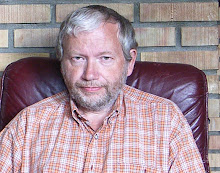Just wanted to put on "paper" an idea so I can go to sleep this cold January night (-5 C here).
The idea:
If you put dots in a row on paper by a pencil, you will have only two directions to move the pencil along to connect those dots no matter how many dots there will be. But if you place those dots irregular, you will soon have an enormous variety of dot paths to choose among. But is there a finite answer about how many different paths there will be, I wonder. So is there a pattern of those dots that optimize the total of dot paths? Thinking about that problem (I don't know if anybody has thought of the problem before me) I conclude that there will not be an irregular shape that will optimize the total of dot paths, but a shape that must be symmetric, I think, which must mean that nature itself seek symmetries (but perhaps not reach that goal because of time delays by force interruptions).
It's tempting to think that some sort of spiral outwards from the first dot you make on paper will be the answer. So two similar spiral layers are separated by one with dots where there's an opposite "hole" in those two spiral layers - and visaversa. And the one spiral layer will also pair up with a similar spiral layer with one of those two spiral layers between. Reduce the distance between layers and even dots to almost zero in the spirals, and it will be like making a spiral of same size coins from a fixed point, each coin of second layer etc resting on two others coins ridges.
Think of those layers of coins as positive or negative items (positive and negative attracts), every two times, then the pile is held together. If you mark the items with a plus or minus sign - every two times, you will notice that there will be three plusses grouped with one minus sign (and visaversa with the 4 type nabor group - considering three sprial layers).
With all "4-groups" there will not be possible to keep the same distance between each same layer pairs as between two items outside the same layer pairs, because the first instance means attractive force and the second means repelling in that cross each 4-groups make. But that is seen isolated - there's an overlap of 4-groups that balance out, I think. So I guess nature will try to keep the same distance between every items if they have the equal amount of charge (negative or positive).
2012-01-25
2012-01-10
Where's The Food?
Remember'em birdies now in the Winter. The snow came here in the lowlands at last in the first days of January. The highlands have been covered by snow since the middle of December. Forcing some birds from the woods, like woodpeckers, to visit cityslickers' bird trays and feeders - like mine!
(The picture was painted by an arm disabled - amazing! From a calendar I bought to support the arm disabled and mouth or leg painters).
(The picture was painted by an arm disabled - amazing! From a calendar I bought to support the arm disabled and mouth or leg painters).
Subscribe to:
Comments (Atom)


